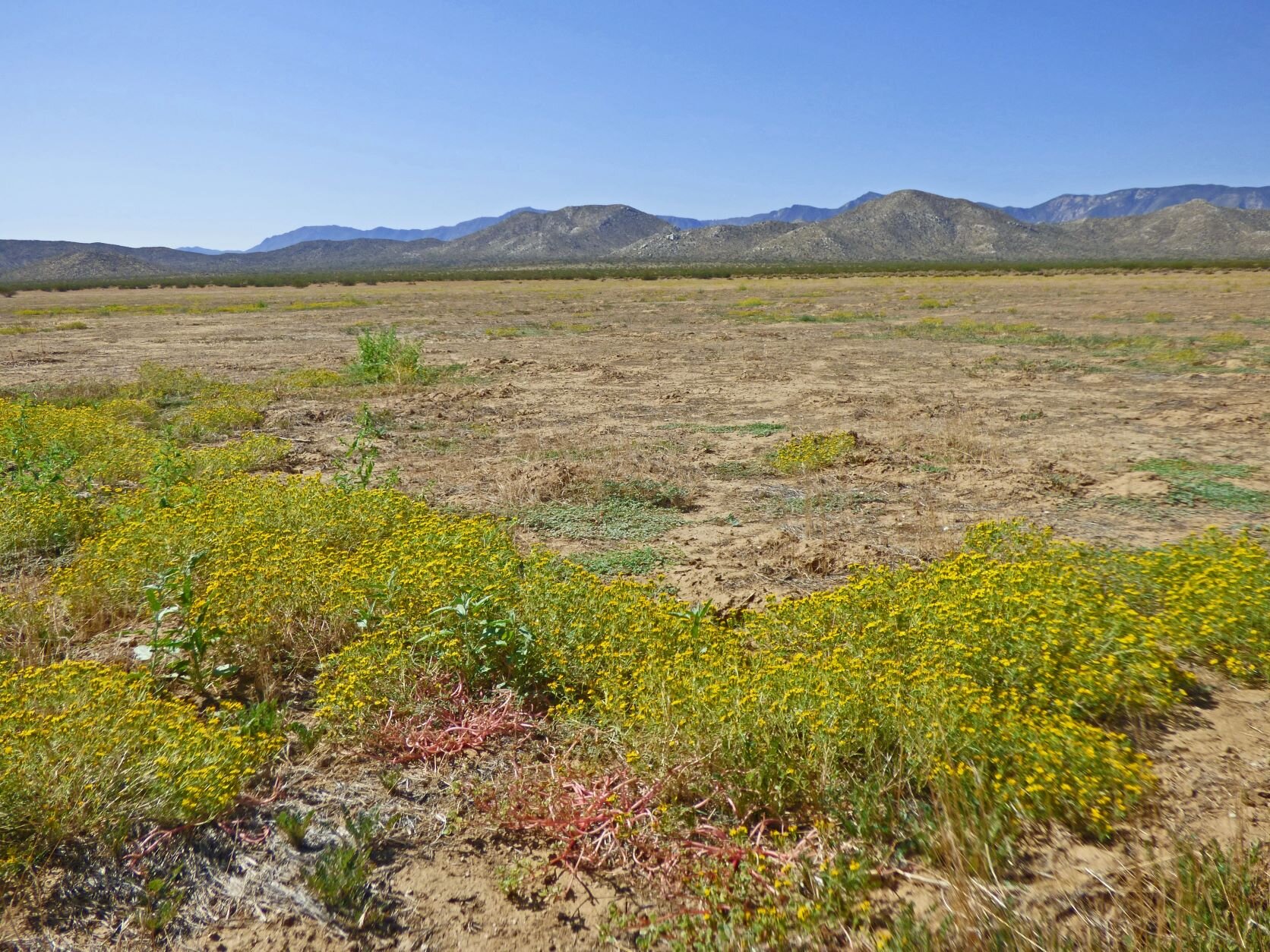By Tom Oberbauer, CNPS-SD President
Coast
The cool west wind blew across the broad mesa several miles west of the dark pine covered ridge of what is now Point Loma. The vegetation was a mix of Artemisia californica (California sagebrush), Eriogonum fasciculatum (California buckwheat) and Eriogonum giganteum (Island buckwheat) and Ceanothus (wild lilac) shrubs, and prairie habitat. The grass was dominated by Stipa species but was blended with a lot of wildflowers, including butter yellow Layia platyglossa (Tidy tips), purple Castilleja spp. (Owl’s clover), blue and white Lupinus spp. (lupines) and the bright orange Eschscholzia californica (California poppy). The color of the flowers was brilliant under the hazy sun. A herd of North American Stilt-legged llama grazed in the midst of the color, bending their long necks to feed on the grasses. They were more slender than modern Llamas in South America and built for speed. The afternoon breeze fluffed the fur of these animals as a couple of them stood holding their heads high, watching for predators. Down the bluff below, the ocean swell created a dull roar and foamy spray.













